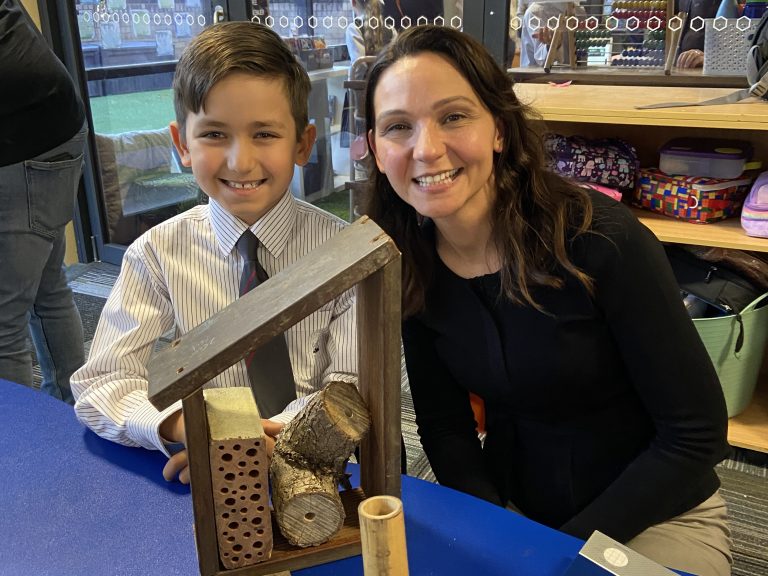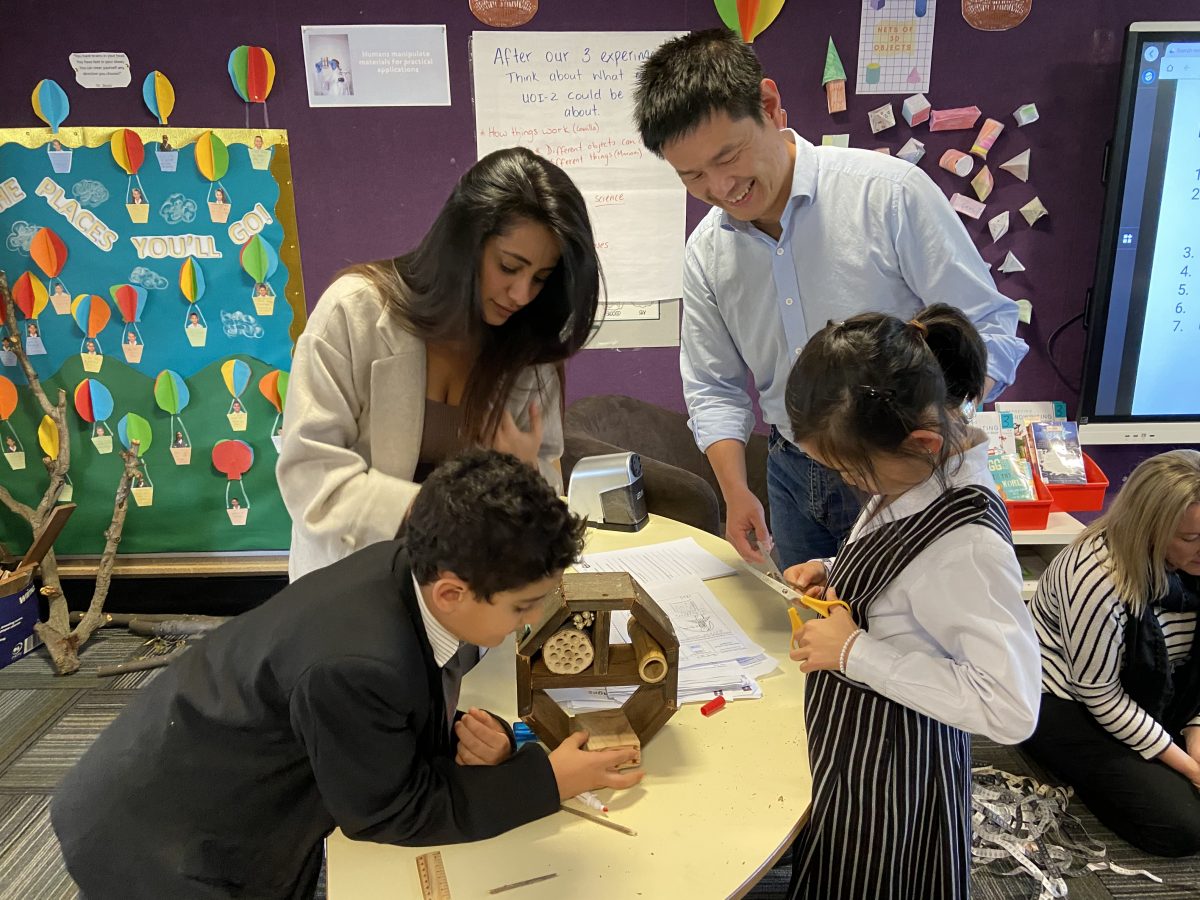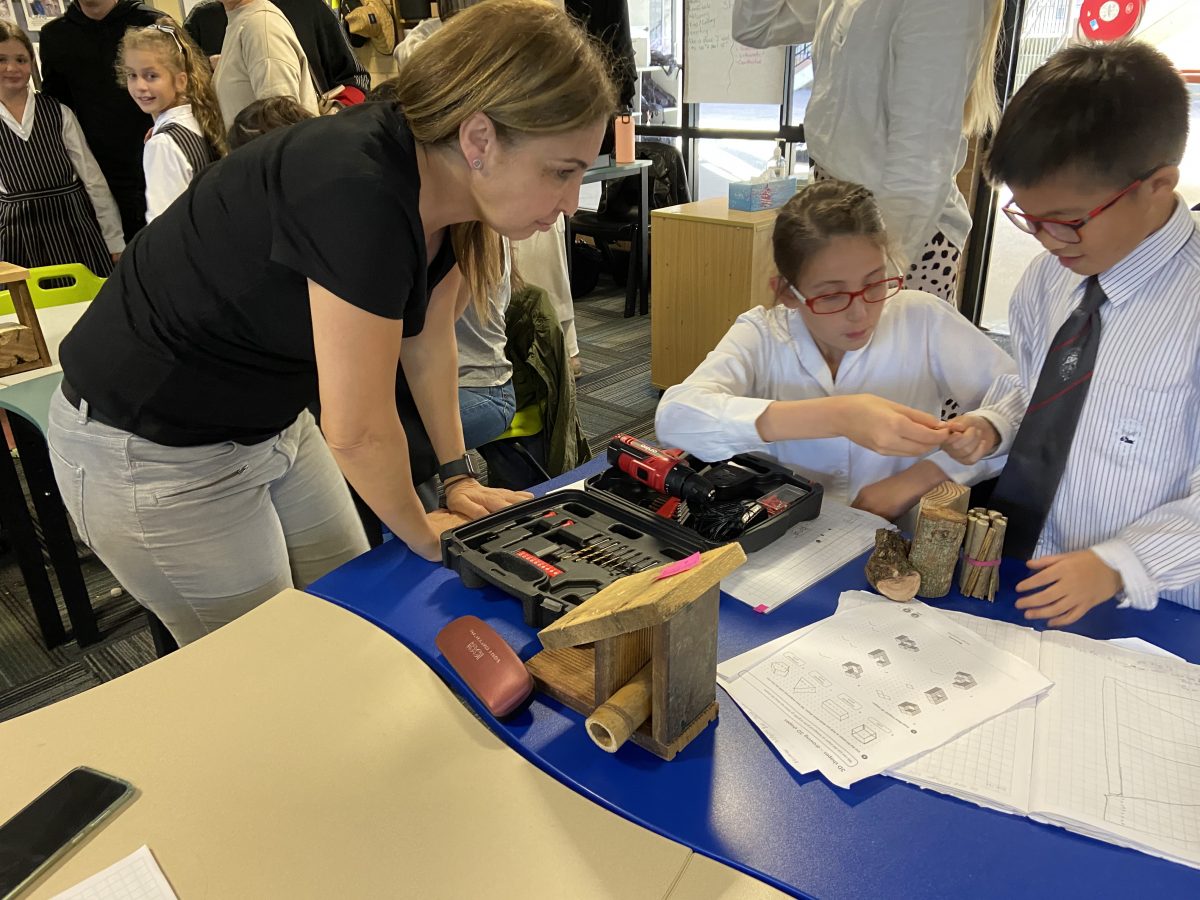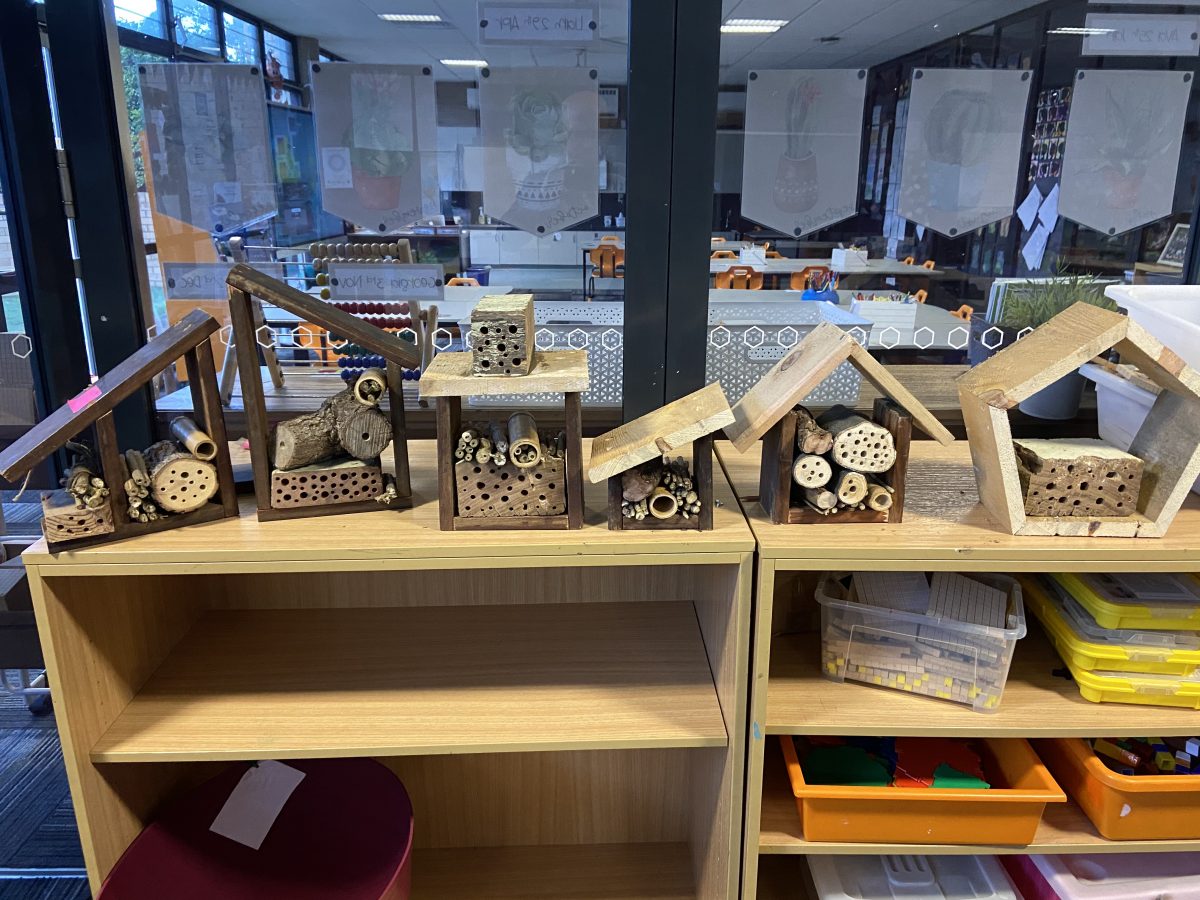Mathematics through enquiry
Year 3 discovered they could design and make bee hotels for the native bees around the school native garden. Their teacher, Luke Carr, explained how the children love to learn about sustainability in a fun, engaging and hands-on way:
After investigating the ecosystem in and around our school native garden and frog pond area, we noticed a number of tiny bees on the flowers. We decided to investigate further and found that they were in fact native bees.
We then started inquiring into our native bees and found that many of these bees are solitary and they build their nests in tiny narrow burrows. They may dig nest tunnels in the ground, excavate nest holes in pithy stems or decaying timber, or build nests inside abandoned holes left by burrowing insects in timber.
There are more than 1500 species of native bees in Australia and they play an important environmental role in pollinating plants. As a result of urban development, solitary native bees have lost a lot of the habitat they need to nest. To encourage native bees into our school garden, we have decided to investigate all the mathematics behind the construction of some bee accommodation – we have decided to design and build bee hotels!
We were so lucky to have our parents come in for our learning walk to see our real-world learning in action, to listen to our mathematical problem-solving language and to assist us with the construction of these amazing bee hotels.






